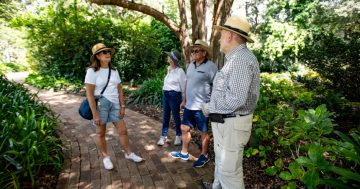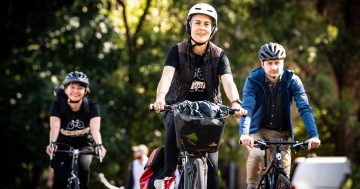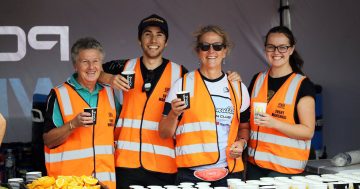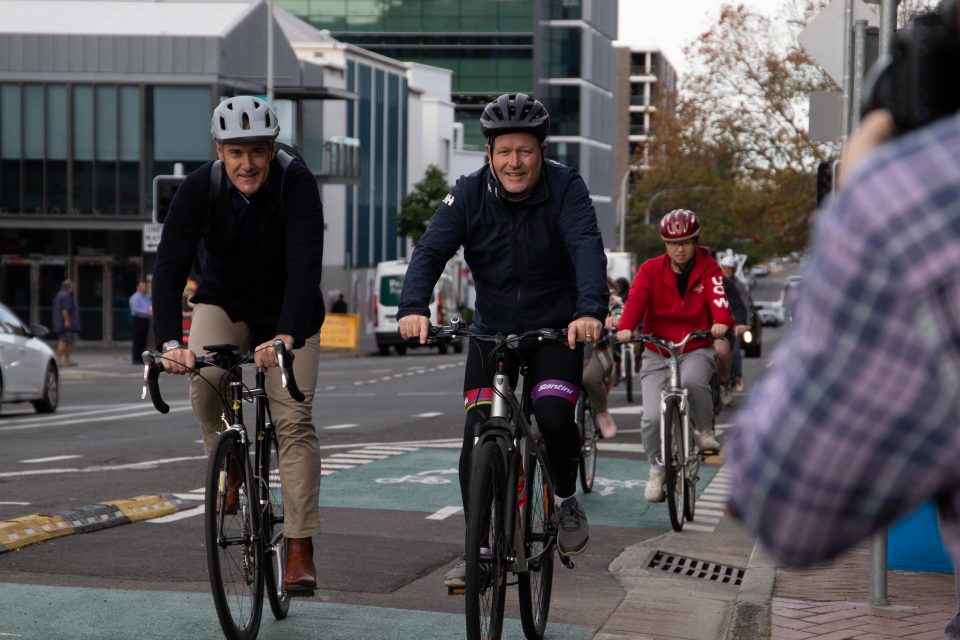
Simon Kersten (left) has seen a huge increase in the cycling community. Photo: River McCrossen.
The benefits from the 2022 UCI Road World Championships just keep rolling on for Wollongong, according to a new report showing the massive impact the event had on the city.
The international exposure and coverage enjoyed by the region last September is highlighted in the post-event summary, which will be considered by Wollongong City Council at its next meeting.
But while it was the big race that put Wollongong on the world stage, the legacy and ongoing opportunities the event created are proving to be the biggest boost for the Illawarra community.
The summary reports that more than 2700 locals participated in the community ride and 17,000 students took part in bike education programs.
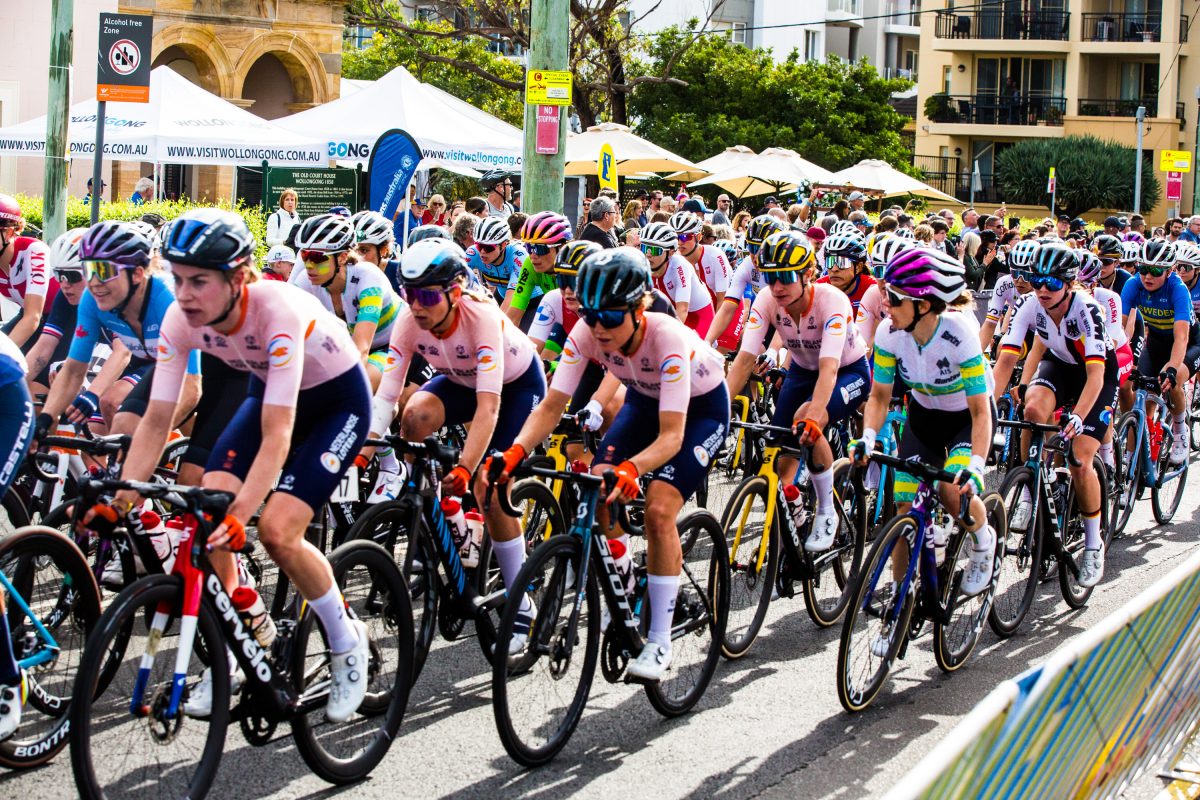
Thousands of community members participated in UCI events across the region. Photo: Wollongong City Council.
A survey showed that the event also inspired more than one-third of people to become more active.
Illawarra Cycle Club President Simon Kersten said the cycling community had already had an increase in interest.
“The most pleasing thing for me is the kids that are riding with their parents or grandparents,” Simon said. “Or maybe the mum is walking on the footpath with a stroller and a younger child is riding on the cycleway next to her and they’re all going somewhere together.
“We didn’t see anything like that before this.”
Wollongong’s label as a UCI Bike City has helped Destination Wollongong explore new initiatives like Bike-Friendly Businesses and Employers.
“By having a bike-friendly business or cafe or store, you are encouraging your customer to come all the way to you,” Simon said. “Those people who are new to it know that they’re a bike-friendly business and that they can go there and there’ll be someone to park their bike.”
Simon said the initiatives were also about attitude and acceptance, and helped cyclists feel more comfortable about using the tracks as a mode of transport.
“It’s also the stigma,” Simon said. “People might feel embarrassed about turning up on a push bike or a little bit sweaty or in casual gear but if you’re a bike-friendly business or a bike-friendly employer you’re saying that’s no problem.”
The report partially credits the progression of new facilities and infrastructure – like the Cringilla Hills Mountain Bike Park, Illawarra Criterium Track and Velodrome and local cycleways – to the event. It also claims that the championship created leverage and attracted funding.
The Illawarra Cycle Club has been able to bring back the Ken Dinnerville Memorial race, which hadn’t received approval in years, and host more elite championships in the criterium.
“That’s a direct result of UCI,” Simon said. “Now we have this historic race back in Wollongong and we’ve got the ability to do that.”
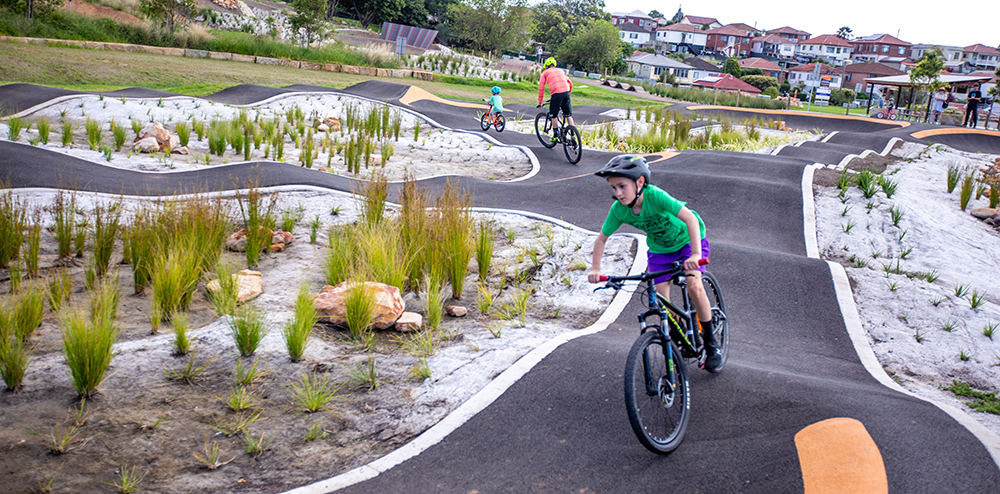
New report shows UCI leverage helped projects like Cringila Hills to progress. Photo: Wollongong City Council.
But there were downsides to the event, with some businesses feeling the pinch.
While quick turnaround hospitality providers in the heart of the race route reported a increase in activity, spending in the Wollongong local government area (as determined by EFTPOS and debit transactions) was down 4.8 per cent.
Uncertainty about road closures was also attributed as the likely reason that spending in the CBD decreased by more than 10 per cent.
“We have so many legacy items left over that are benefitting and will benefit the city for many years to come and that is one of the very few negatives of the event,” Simon said.
There were positive economic impacts as well, though: occupancy at tourist parks owned by Wollongong City Council was up 20 to 30 per cent.
The experience also provided a snapshot of cultural and arts opportunities possible in the city through SpinFest, which featured more than 30 events and attracted thousands of people.
“There were lots of things to do and there was a lot of city activation that was great,” Simon said. “I think that was a good model that you could use moving forward if you had a multi-day event in the city, you’d absolutely want to try and recreate that festival situation.”
Councillors will reflect on the learnings from the event and how it will guide the region in the future when they discuss the paper on Monday (26 June).








